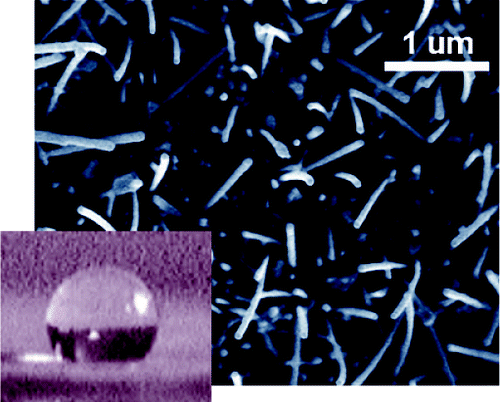A.I. Borrás, A. Barranco, A.R. González-Elipe
Langmuir, 24 (2008) 8021-8026
doi: 10.1021/la800113n

A new type of superhydrophobic material consisting of a surface with supported Ag@TiO2 core−shell nanofibers has been prepared at low temperature by plasma-enhanced chemical vapor deposition (PECVD). The fibers are formed by an inner nanocrystalline silver thread which is covered by a TiO2 overlayer. Water contact angles depend on the width of the fibers and on their surface concentration, reaching a maximum wetting angle close to 180° for a surface concentration of ∼15 fibers µm−2 and a thickness of 200 nm. When irradiated with UV light, these surfaces become superhydrophilic (i.e., 0° contact angle). The decrease rate of the contact angle depends on both the crystalline state of the titania and on the size of the individual TiO2domains covering the fibers. To the best of our knowledge, this is one of the few examples existing in the literature where a superhydrophobic surface transforms reversibly into a superhydrophilic one as an effect of light irradiation.

